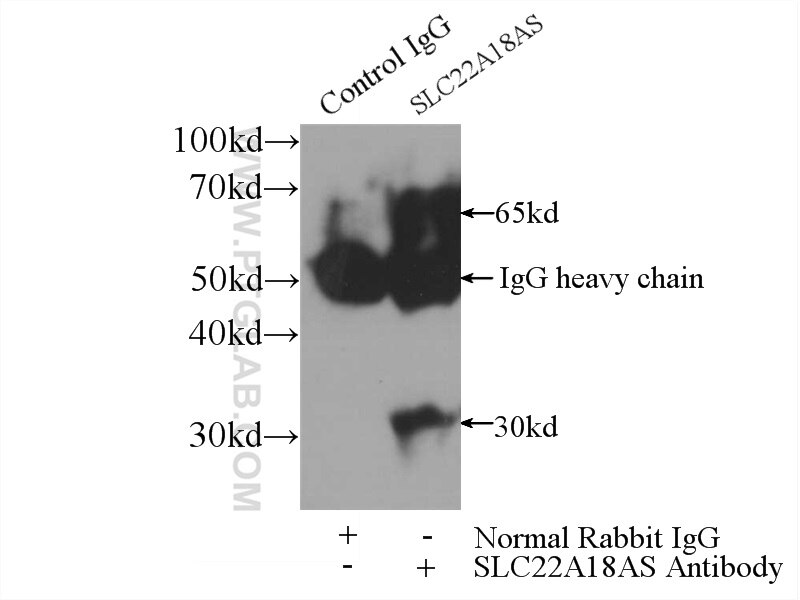SLC22A18AS Polyklonaler Antikörper
SLC22A18AS Polyklonal Antikörper für IP, ELISA
Wirt / Isotyp
Kaninchen / IgG
Getestete Reaktivität
human
Anwendung
IP, ELISA
Konjugation
Unkonjugiert
Kat-Nr. : 13475-1-AP
Synonyme
Galerie der Validierungsdaten
Geprüfte Anwendungen
| Erfolgreiche IP | HepG2-Zellen |
Empfohlene Verdünnung
| Anwendung | Verdünnung |
|---|---|
| Immunpräzipitation (IP) | IP : 0.5-4.0 ug for 1.0-3.0 mg of total protein lysate |
| It is recommended that this reagent should be titrated in each testing system to obtain optimal results. | |
| Sample-dependent, check data in validation data gallery | |
Produktinformation
13475-1-AP bindet in IP, ELISA SLC22A18AS und zeigt Reaktivität mit human
| Getestete Reaktivität | human |
| Wirt / Isotyp | Kaninchen / IgG |
| Klonalität | Polyklonal |
| Typ | Antikörper |
| Immunogen | SLC22A18AS fusion protein Ag4274 |
| Vollständiger Name | solute carrier family 22 (organic cation transporter), member 18 antisense |
| Berechnetes Molekulargewicht | 253 aa, 27 kDa |
| Beobachtetes Molekulargewicht | 30 kDa, 65 kDa |
| GenBank-Zugangsnummer | BC030237 |
| Gene symbol | SLC22A18AS |
| Gene ID (NCBI) | 5003 |
| Konjugation | Unkonjugiert |
| Form | Liquid |
| Reinigungsmethode | Antigen-Affinitätsreinigung |
| Lagerungspuffer | PBS mit 0.02% Natriumazid und 50% Glycerin pH 7.3. |
| Lagerungsbedingungen | Bei -20°C lagern. Nach dem Versand ein Jahr lang stabil Aliquotieren ist bei -20oC Lagerung nicht notwendig. 20ul Größen enthalten 0,1% BSA. |
Hintergrundinformationen
The SLC22A18/SLC22A18AS genes are a sense-antisense pair located at human chromosome segment 11p15.5. These genes are paternally imprinted: paternal alleles are silenced and maternal alleles are expressed. SLC22A18AS (antisense) is associated to SLC22A18 (sense). These two genes share, in divergent orientations, 31 bp in their 5′ regions (between the first exon of SLC22A18AS and the second exon of SLC22A18). This antibody recognizes SLC22A18AS only.
Protokolle
| Produktspezifische Protokolle | |
|---|---|
| IP protocol for SLC22A18AS antibody 13475-1-AP | Protokoll herunterladen |
| Standard-Protokolle | |
|---|---|
| Klicken Sie hier, um unsere Standardprotokolle anzuzeigen |


